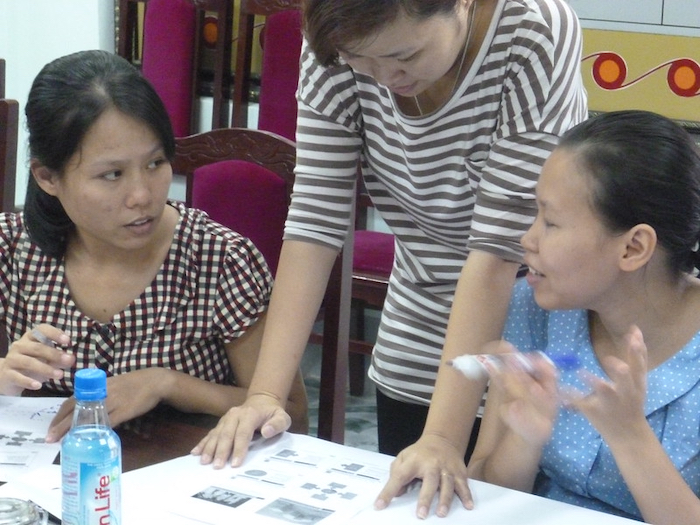 In this scenario a journalist comes across information that changes the focus of a story the editor had asked them to write. Should they include it or withhold it.
In this scenario a journalist comes across information that changes the focus of a story the editor had asked them to write. Should they include it or withhold it.
You are a reporter working on a local newspaper. The editor asks you to write an article about a local business that offers a service which is available for a paid-for subscription.
The editor explains that the piece promoting the business’s product is not an advertorial, but is a case of “working together with a local success story in a way that is mutually beneficial”.
You set to work on the piece and create an article which is then published in print and online.
A reader contacts you after the piece is published to tell you that a similar service is being offered by a non-commercial community project run by volunteers and which is totally free-of-charge.
You thank them for alerting you to the free service, and tell them that you have since been working on a second piece about the paid-for service, with an article due to be published in a couple of days.
The reader suggests you add a line about the free service saying that “In these times when people are struggling with the cost of living it might be nice to let your readers know that there is a similar service completely free-of-charge”.
What should you do?
A: Ignore the new information that you have received and publish without mentioning the free service because you feel you can’t mention every service that exists in the area or take attention away from the paid-for service whose coverage is “mutually beneficial”.
B: Rework the article to include the information you have just been given because thorough and comprehensive journalism means that you should include all relevant information that could help enhance the knowledge of your audience about the topic you are covering.
C: Plan a third piece about the free service to be published at a later date.
Suggested action
We would recommend option B if print and online deadlines allow (and of course online articles can always be updated).
You have been alerted to relevant information by a member of the public. It is information that is absent from your report and which could be of valuable to your audience.
As a journalist you have a responsibility to inform the public debate so that the audience can make educated choices.
Your job is to gather facts, test them, then present them to the audience so they can assess their value.
Because of that, you should be sharing all relevant information that could help those who read your journalism.
Withholding information, for whatever reason, should be done for solid editorial reasons only, such as the likelihood to offend, cause harm, or mislead. For more on offence please see our ethics section and the article about offence and journalism.
In this case the reporter should refer up to their editor, explain that new information has come to light which is relevant to the piece being produced, and discuss how to incorporate what you have learnt in a clear and concise way that is of benefit to those who consume the news your media house produces.
You should never knowingly publish an incomplete news report unless it is part of a series of investigations which, in their totality, present all the facts to the audience.

This scenario presents a classic ethical dilemma faced by journalists: balancing the interests of a source (in this case, a business with a “mutually beneficial” relationship), the expectations of an editor, and the core responsibility to inform the public accurately and comprehensively. Let’s delve deeper into the complexities at play:
- The “mutually beneficial” relationship and its implications:
- Potential bias:
- The editor’s phrasing, “working together with a local success story in a way that is mutually beneficial,” raises red flags. It suggests a potential blurring of lines between journalism and public relations. This kind of arrangement can compromise journalistic objectivity, as the reporter may feel pressured to present a favourable narrative.
- This relationship could create a conflict of interest. The journalist might feel compelled to prioritise the business’s interests over the public’s right to know about alternative options.
- Trust and credibility:
- Readers are increasingly discerning. They can detect when a story feels like an advertisement in disguise. If the article lacks balance and omits crucial information, it can damage the newspaper’s credibility and erode public trust.
- The reader that contacted the journalist, is showing that trust is placed in the journalist to report fairly.
- Potential bias:
- The significance of the reader’s tip:
- Public service journalism:
- The reader’s information highlights the essence of public service journalism: providing information that empowers citizens to make informed decisions. In a time of economic hardship, knowing about a free alternative is particularly valuable.
- The reader is acting as a “citizen journalist” helping to provide important information.
- Completeness and accuracy:
- A truly comprehensive report should include all relevant information, even if it challenges the initial narrative. Omitting the free service creates an incomplete picture, potentially misleading readers.
- Ethical obligation:
- Journalists have an ethical obligation to seek the truth and report it fairly. This includes acknowledging and addressing new information that comes to light, even if it requires revising a previously published article.
- Public service journalism:
- Analysing the Options:
- Option A (Ignore the new information):
- This option is ethically indefensible. It prioritises the “mutually beneficial” relationship over the public’s right to know.
- It betrays the core principles of journalism and risks damaging the newspaper’s reputation.
- Option B (Rework the article):
- This is the most ethical and responsible course of action. It demonstrates a commitment to accuracy, fairness, and public service.
- It acknowledges the importance of providing readers with complete and relevant information.
- It shows that the journalist is willing to adapt to new information.
- Option C (Plan a third piece):
- While this option might seem like a compromise, it delays the dissemination of crucial information.
- It also raises questions about why the information was not included in the original article or the follow up article.
- This choice could be seen as an attempt to control the flow of information, rather than providing it promptly.
- Option A (Ignore the new information):
- The importance of editorial oversight:
- Transparency and accountability:
- The reporter should immediately inform the editor about the new information and discuss how to incorporate it into the article.
- This demonstrates transparency and accountability.
- Ethical decision-making:
- The editor should support the reporter’s decision to include the information, even if it means revising the article.
- This reinforces the newspaper’s commitment to ethical journalism.
- Policy and guidelines:
- The newspaper should have clear ethical guidelines regarding conflicts of interest and the handling of new information.
- Transparency and accountability:
In conclusion: The journalist’s primary responsibility is to the public. Option B, reworking the article to include the free service, is the only ethically sound choice. It upholds the principles of accuracy, fairness, and public service, and reinforces the credibility of the news organisation. The “mutually beneficial” relationship with the business should not be prioritised over the public’s right to know.








